- Home
- Wilson Harris
Palace of the Peacock
Palace of the Peacock Read online
WILSON HARRIS
Palace of the Peacock
with a note by author and an essay by Kenneth Ramchand
For Margaret, Nigel and Sydney
It ceases to be history and becomes… fabricated for pleasure, as moderns say, but I say by Inspiration.
William Blake
And after the earthquake a fire; but the Lord was not in the fire: and after the fire a still small voice.
I Kings 19 : 12
CONTENTS
Title Page
Dedication
Epigraph
Author’s Note
Book One: Horseman, Pass By
I
II
III
Book Two: The Mission of Mariella
IV
V
VI
Book Three: The Second Death
VII
VIII
IX
Book Four: Paling of Ancestors
X
XI
XII
Pursuing the Palace of the Peacock
About the Author
Copyright
AUTHOR’S NOTE
This is my second Note or short preface to Palace of the Peacock. My first was actually an amendment in 1988 to a Note on the Genesis of the Guyana Quartet, when the four novels constituting the Quartet (of which Palace is the first) were collected and issued in one volume in 1985.
Kenneth Ramchand, the Caribbean scholar, wrote an introductory piece to the first paperback edition of Palace in 1968.
It is useful now, I think, as the 1990s draw to a close, to bring into some relief certain features in Palace which respond to a creative ferment that has been happening in the Americas since 1960 when the novel first appeared.
That ferment is curiously relevant, I find, to the body of fiction I have written through The Guyana Quartet and succeeding novels up to the latest, Jonestown.
Critics now see Palace within a context of “magical realist” fiction and therefore relevant, across the years, to an innovative tradition that has become fashionable, though scarcely articulated or considered in 1960.
Of note also is a new emphasis on variants of “music” in prose and poetry. It is arguable that this is nothing new (when one reflects, for instance, on the Harlem renaissance earlier in this century) but the innovative daring of distinguished black American poets – who are the recipients of notable prizes – became sharper within the present decade and in the 1980s.
In tandem with all this is a remarkable and phenomenal upsurge of interest in pre-Columbian cultures, arts, civilizations, and the parallel resources these offer to visualizations of architectures of tradition long vanished or eclipsed.
Much more could be said of this ferment, and the field of consciousness it embraces, but I shall restrict this Note to the particular variant of “music” (possibly original) in Palace.
I speak of music – the “spirit-bone” of the Caribs which may be associated with South American rivers – in the prefatory Note I wrote to the Quartet in the mid-1980s but I am better placed now to outline the specificity inherent to such rhythm. The seed of the Carib bone-flute constitutes an evolving tone which is pertinent to the entire body of fiction I have written. There is no straightforward metaphor that mirrors this evolution but in my mind it corresponds to a paradoxical veil or density in the ancient “bone-spirit” which falls upon invisibles in space and makes them visible. I shall give an illustration of this shortly.
But first it is necessary to outline, as succinctly as I can, the archetypal ground and numinosity of tradition infusing, so to speak, the bone-spirit or bone-flute. The latter is the uncanny termination of a bridge of rhythm arcing or curving from pre-Columbian Mexico into the pre-Columbian and post-Columbian Guianas in South America. At the ancient Mexican origin or genesis of the bridge is the apparition of Quetzalcoatl (quetzal, the heavenly bird, coatl, the wise serpent). The bird-wing of the bridge flies in space, half-seen within the rhythms of space, partially unseen. The scale of the serpent orchestrates minutiae of soil and rain which fill crevices in the body of the earth, river beds, caves, oceans. The serpent is tidal, it is oceanic, it is terrestrial.
Further along the bridge looms Kukulcan, the obscure ancestor of migrating species. He is also an androgynous incorporation of the womb. Man is born of woman and, in shamanic legend, woman of man.
Next arises Huracan or Hurricane who shakes the bridge to its foundations and demolishes worlds. Hurricane subsides into the bone-flute of Yurokon, the eternal child. Yurokon is the termination of the history or storyline of the bridge in the Guianas.
Yurokon’s mother is sometimes identified with muses or furies who have suffered abuse at the hand of the Caribs.
Yurokon is Quetzalcoatl’s cousin. His Guianese parents are the doomed Caribs. His veil arises from a cauldron in which the Caribs cook a morsel of flesh stripped from the bone of the conquistador or invader. Yurokon therefore coincides with the Spanish and European conquest of the Central and South Americas. The ritual consumption of a morsel of flesh plucked from the enemy plants knowledge of the invader’s plans and intentions. The Caribs were doomed though they fought fiercely. Thus Yurokon is the birth of bitter self-knowledge and extremity. The evil of conquest in the invader smarts and exacerbates a sensation of mutual horror in the Carib spirit which entertains an identical lust for triumphal victory.
The accent upon a terminal moment in the history of an age, in the bone-spirit, creates a cloak of uncertainties about the consequences of change; and the need to transgress certain frames becomes a native universal theme or implicit legacy. This is the music of time within clustering imageries upon the bone-flute.
Donne dies many deaths in Palace of the Peacock. He relives the terminal moment of history in the uncertainty of his own demise as portrayed and re-enacted by his nameless twin brother who dreams him back to life, life becomes a relived, terminal, but paradoxically regained threshold into rhythmic space or nuclear turning point between times past, present and future. Such is the trial and rebirth of community, encompassing intimate strangers, in the Dream of space time, intimate re-visionary invader, intimate re-visionary invaded, native host, twin-ships, twin-bridges, lost cities that vanish to reappear within the elements, muses, furies.
I must confess I have been haunted since childhood in British Guiana, South America, where I was born, by vanished cultures and places and kingdoms. One such legendary kingdom was ancient El Dorado. No one to my knowledge has seen El Dorado. It seems to move and transplant itself within the great rain forests that lie between the Amazon and the Orinoco. Sir Walter Ralegh failed to find it in his last voyage into the Orinoco in the early seventeenth century. As a consequence he lost his head in the Tower when he returned to London.
When one visualizes Ralegh against the backcloth of bone-spirit bridge his death is another echoing passage into relived termini (which Donne endures) and re-visionary cross-cultural medium between the Americas and Europe.
The story line of his narrow expedition is fractured into the prism of far-flung voyages …
My own expeditions as a land and hydrographic surveyor in the 1940s and 50s led me to intuit rhythms to riverscapes, landscapes, skyscapes which exposed an apparition and magical palace within changed and changing bridges of time.
El Dorado possesses its archetypal equation between place and placelessness, in orchestrated elements, wind, fire, earth, water. Such orchestration implies the arousal of hidden worlds, the Word of creations in the bone or skeleton of cities to be relived again within architectures of time. El Dorado is fabulous but it is not only a legend of relived memory and the City of God one seeks everywhere. It is a grave and bloodstained canvas of greed for go
ld and territory across centuries.
At the very outset of Palace of the Peacock, Donne is envisioned – in the tradition I have sought to outline – as dying more than one death, experiencing more than one terminal moment in history. Did he die on the gallows? Was he shot by the fury Mariella (the woman he abused)? Later it is suggested he was drowned. Three deaths at the hand of muses or furies of place and time revisited by his nameless twin brother who dreams him back to life …
Here is the passage at the outset of Palace to which I allude:
A horseman appeared on the road coming at a breakneck stride. A shot rang out suddenly, near and yet far as if the wind had been stretched and torn and had started coiling and running in an instant. The horseman stiffened with a devil’s smile, and the horse reared, grinning fiendishly and snapping at the reins. The horseman gave a bow to heaven like a hanging man to his executioner, and rolled from his saddle on to the ground.
The shot had pulled me up and stifled my own heart in heaven …
I dreamt I awoke with one dead seeing eye and one living closed eye …
Mariella had killed him …
(pages 19 to 21, Palace of the Peacock, 1988)
The nameless, dreaming twin brother “I” rides towards El Dorado and re-enacts in himself a theatre of revenge inflicted on the EldoraDonne fugitive of time his brother has become across the aroused or awakening centuries. For his brother, the conquistador, is now native – in an evolution of the unfinished genesis of the Imagination – to the soil of Old/New worlds. Donne’s ghost and that soil are becoming visible again within the gaps and holes and hiatuses of recorded histories.
Such visibility is made possible by the density or rhythmic veil of “wind … stretched and torn … coiling and running in an instant”. Not only that. The “invisible” wind is outlined into a luminous tension between implicit rope or noose and “stiffened” bullet.
It is not my intention to say much more in this brief Note. Except a word about muses of time and place. Even as Donne embodies a plurality of voyagers, a plurality of living deaths, so Mariella (whom he abuses) embodies a plurality of women. These are made visible as terror-making faculties and the regenerative womb of time when the skeletal fabric and artifice of history’s masquerade acquire luminous density in the music of living landscapes.
There is the ancient Arawak woman whom Donne and his crew seize and conscript into a guide.
Tiny embroideries resembling the handwork on the Arawak woman’s kerchief and the wrinkles on her brow turned to incredible and fast soundless breakers of foam …
The crew were filled with the brightest-seeming clarity of tragedy, as cloudless as imperfectly true as their self-surrender to the hardship of the folk they followed and pursued: the cloudy scale of incestuous cruelty and self-oppression tumbled from their eye … Their ears were unstopped at last …
(pages 62 to 64, Palace of the Peacock, 1988)
Finally with respect to Mariella’s embodiment of women and a womb of potentialities beyond every frame of abuse comes a revelation of the “bone-spirit” in the woman dressed in nothing but her hair.
Such artifice rooted in nature is peculiarly subtle in its orchestration of elements. There is a rhythmic linkage between ear and eye foreshadowed in the ancient Arawak woman and Donne’s crew. In pre-Columbian legend “ear” and “eye” and “head” could assume different personalities to be combined and recombined into a music of the senses. My intuitive interpretation of such recombinations is that a hidden capacity slumbers in nature and everywhere to address a labyrinth of healing in a conflict-ridden age. Within such a labyrinth, adversarial twins – not necessarily connected by blood or race – become psychically supportive one of the other in trials of the Imagination.
In those trials a “material nexus binding the spirit of the universe” gives way to a “threadbare garment” envisioned by ear and eye: as though ear sees, eye listens, within a medium of visionary music.
Such artifice – if artifice it is – brings a pregnant apparition into the silences of space that have neither a beginning nor an ending.
The woman was dressed in a long sweeping garment belonging to a far and distant age. She wore it so absentmindedly and naturally, however, that one could not help being a little puzzled by it. The truth was it was threadbare. One felt that a false move from her would bring it tumbling to the ground. When she walked, however, it still remained on her back as if it was made of the lightest shrug of her shoulders – all threads of light and fabric from the thinnest strongest source of all beginning and undying end.
(page 106, Palace of the Peacock, 1988)
WILSON HARRIS
January, 1997
BOOK ONE
HORSEMAN, PASS BY
Cast a cold eye
On Life, on death.
Horseman, pass by.
W. B. Yeats
I
A horseman appeared on the road coming at a breakneck stride. A shot rang out suddenly, near and yet far as if the wind had been stretched and torn and had started coiling and running in an instant. The horseman stiffened with a devil’s smile, and the horse reared, grinning fiendishly and snapping at the reins. The horseman gave a bow to heaven like a hanging man to his executioner, and rolled from his saddle on to the ground.
The shot had pulled me up and stifled my own heart in heaven. I started walking suddenly and approached the man on the ground. His hair lay on his forehead. Someone was watching us from the trees and bushes that clustered the side of the road. Watching me as I bent down and looked at the man whose open eyes stared at the sky through his long hanging hair. The sun blinded and ruled my living sight but the dead man’s eye remained open and obstinate and clear.
*
I dreamt I awoke with one dead seeing eye and one living closed eye. I put my dreaming feet on the ground in a room that oppressed me as though I stood in an operating theatre, or a maternity ward, or I felt suddenly, the glaring cell of a prisoner who had been sentenced to die. I arose with a violent giddiness and leaned on a huge rocking-chair. I remembered the first time I had entered this bare curious room; the house stood high and alone in the flat brooding countryside. I had felt the wind rocking me with the oldest uncertainty and desire in the world, the desire to govern or be governed, rule or be ruled for ever.
Someone rapped on the door of my cell and room. I started on seeing the dream-horseman, tall and spare and hard-looking as ever. “Good morning,” he growled slapping a dead leg and limb. I greeted him as one greeting one’s gaoler and ruler. And we looked through the window of the room together as though through his dead seeing material eye, rather than through my living closed spiritual eye, upon the primitive road and the savannahs dotted with sentinel trees and slowly moving animals.
His name was Donne, and it had always possessed a cruel glory for me. His wild exploits had governed my imagination from childhood. In the end he had been expelled from school.
He left me a year later to join a team of ranchers near the Brazil frontier and border country. I learnt then to fend for myself and he soon turned into a ghost, a million dreaming miles away from the sea-coast where we had lived.
“The woman still sleeping,” Donne growled, rapping on the ground hard with his leg again to rouse me from my inner contemplation and slumber.
“What woman?” I dreamed, roused to a half-waking sense of pleasure mingled with foreboding.
“Damnation,” Donne said in a fury, surveying a dozen cages in the yard, all open. The chickens spied us and they came half-running, half-flying, pecking still at each other piteously and murderously.
“Mariella,” Donne shouted. Then in a still more insistent angry voice – “Mariella.”
I followed his eyes and realized he was addressing a little shack partly hidden in a clump of trees.
Someone was emerging from the shack and out of the trees. She was barefoot and she bent forward to feed the chickens. I saw the back of her knees and the fine beautiful grain
of her flesh. Donne looked at her as at a larger and equally senseless creature whom he governed and ruled like a fowl.
*
I half-woke for the second or third time to the sound of insistent thumping and sobbing in the hall outside my door. I awoke and dressed quickly. Mariella stood in the hall, dishevelled as ever, beating her hand on my door.
“Quiet, quiet,” I said roughly shrinking from her appearance. She shuddered and sobbed. “He beat me,” she burst out at last. She lifted her dress to show me her legs. I stroked the firm beauty of her flesh and touched the ugly marks where she had been whipped. “Look,” she said, and lifted her dress still higher. Her convulsive sobbing stopped when I touched her again.
*
A brilliant day. The sun smote me as I descended the steps. We walked to the curious high swinging gate like a waving symbol and warning taller than a hanging man whose toes almost touched the ground; the gate was as curious and arresting as the prison house we had left above and behind, standing on the tallest stilts in the world.
“Donne cruel and mad,” Mariella cried. She was staring hard at me. I turned away from her black hypnotic eyes as if I had been blinded by the sun, and saw inwardly in the haze of my blind eye a watching muse and phantom whose breath was on my lips.
She remained close to me and the fury of her voice was in the wind. I turned away and leaned heavily against the frail brilliant gallows-gate of the sky, looking down upon the very road where I had seen the wild horse, and the equally wild demon and horseman fall. Mariella had killed him.
*
I awoke in full and in earnest with the sun’s blinding light and muse in my eye. My brother had just entered the room. I felt the enormous relief one experiences after a haze and a dream. “You’re still alive,” I cried involuntarily. “I dreamt Mariella ambushed and shot you.” I started rubbing the vision from my eye. “I’ve been here just a few days,” I spoke guardedly, “and I don’t know all the circumstances” – I raised myself on my elbow – “but you are a devil with that woman. You’re driving her mad.”

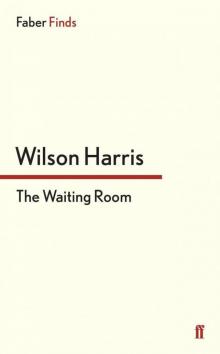 The Waiting Room
The Waiting Room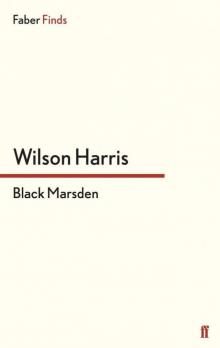 Black Marsden
Black Marsden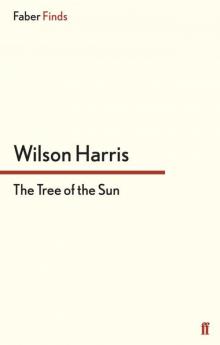 The Tree of the Sun
The Tree of the Sun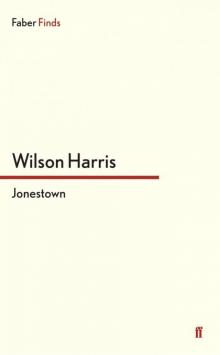 Jonestown
Jonestown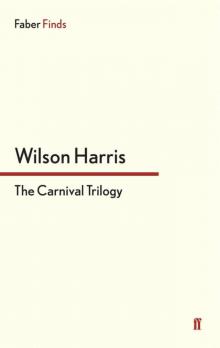 The Carnival Trilogy
The Carnival Trilogy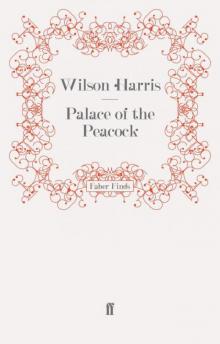 Palace of the Peacock
Palace of the Peacock